History
Old buildings (like the castle) suggest wars, sieges and looting, insecurity, defense and surveillance. In the iron age there was already a human settlement (the primitive Larraga), passing later by the Roman time, of which remains of a causeway with a bridge and in the middle age a protective castle and watch over the crown of a Hill by whose west and southwest slope the village was scattered, in the origins of the Kingdom of Navarre.
It has always been said that the first documented origins of Larraga came from the Roman villa Tarraga, cited by Pliny, even so appear in various encyclopedias very well considered. Whether or not it is so, what we can affirm is the presence of the Roman Empire here, as witnessed by the Roman bridge that is coming out of the gas station in the direction of Estella, about 500 meters.
But there are still more, since we can go back to earlier times; There remain archaeological remains of prehistoric settlements scattered throughout the entire municipality.
If we go to the medieval period, it is indisputable the fact that this town dating from the eleventh century; Sufficient vestige is the Santo Cristo del Socorro, Romanesque carving of the XII century, that has reached to our days with a strong rooting.
In 1193, Sancho the Wise grants to Larraga his private privilege that was applied with other mentioned mercedes in defense of its castle was entrusted to the council of the town, signal of great fidelity and prized priceless. Carlos II made it realenga villa. Don Juan de Albret and Catalina de Foix, besides giving him his shield, made it a good town, with a seat in Cortes.






